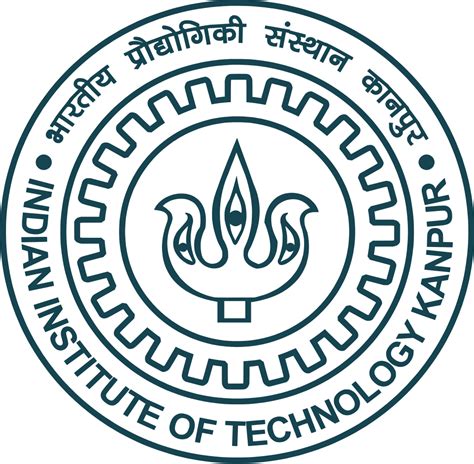
Education / Work History
Research Topic / Interest
Contact me to know my current interests.
Publications
These include only those published in our lab.
-
Exploring the Effects of Intermolecular Interactions on the Self-Defocusing of Binary Liquid Mixtures Using Single Beam z-Scan Technique - Asian Journal of Physics.
R. K. Gupta, S. Kant, and D. Goswami, Asian Journal of Physics 31, 897–904 (2023)
[Abstract]
[PDF]
[BibTeX]
Abstract: Self-defocusing (or negative lens effect) study of different sets of binary liquid mixtures having varying polarities has been carried out by employing a high repetition rate (HRR) femtosecond pulsed laser and utilising a single beam close aperture z-scan (CAZS) technique. We determined the change in transmittance values between peak and valley (ΔTp-v) of the CAZS trace for each different binary liquid mixtures at the varying composition of components. We correlated the variation of ΔTp-v values with the composition ratio of components to the change in physical parameters, which in turn affects the intermolecular interactions. Here, the combined effects of polarity differences and different molecular structures having steric hindrance are found to affect intermolecular interactions significantly in binary mixtures which in turn affect the self-defocusing effect.
BibTeX: @article{guptaExploringEffectsIntermolecular2023, title = {Exploring the Effects of Intermolecular Interactions on the Self-Defocusing of Binary Liquid Mixtures Using Single Beam z-Scan Technique - {{Asian Journal}} of {{Physics}}}, author = {Gupta, Rahul K. and Kant, Surya and Goswami, Debabrata}, date = {2023-02-20}, journaltitle = {Asian Journal of Physics}, volume = {31}, pages = {897--904}, url = {https://asianjournalofphysics.com/exploring-the-effects-of-intermolecular-interactions-on-the-self-defocusing-of-binary-liquid-mixtures-using-single-beam-z-scan-technique/}, urldate = {2023-07-28} } -
Investigating the Effects of Intermolecular Interactions on Nonlinear Optical Properties of Binary Mixtures with High Repetition Rate Femtosecond Laser Pulses.
R. K. Gupta, S. Verma, S. Singhal, S. Kant, and D. Goswami, PeerJ Physical Chemistry 4, e23 (2022)
[Abstract]
[PDF]
[BibTeX]
Abstract: Measurements of nonlinear optical (NLO) properties of different binary mixtures having carbon disulfide (CS2) as the common component, namely CS2-acetone, CS2-cyclopentanone, CS2-toluene, and CS2-carbon tetrachloride (CCl4), are carried out by using the z-scan technique. Open-aperture z-scan (OAZS) and close-aperture z-scan (CAZS) experiments are performed to determine the nonlinear absorption coefficient (β) and nonlinear refractive index (n2) of all binary liquid mixtures at various compositions of the components by employing a pulsed, high repetition rate (HRR) femtosecond laser. Also, we were able to use the flowing liquid to measure NLO properties in the CS2-acetone binary mixture to remove the cumulative thermal effects produced due to the pulsed HRR laser light. Nonlinear refractive index (n2) values are found to be influenced by the weak dipole-induced dipole intermolecular interactions between the nonpolar CS2 and polar acetone as well as cyclopentanone of the respective binary mixtures. On the contrary n2 values are not found to be affected by the intermolecular interactions in CS2-toluene and CS2-CCl4 binary mixtures. In comparison, the nonlinear absorption coefficient (β) values are not found to be affected by the same in all different sets of binary mixtures.
BibTeX: @article{guptaInvestigatingEffectsIntermolecular2022, title = {Investigating the Effects of Intermolecular Interactions on Nonlinear Optical Properties of Binary Mixtures with High Repetition Rate Femtosecond Laser Pulses}, author = {Gupta, Rahul Kumar and Verma, Sachin and Singhal, Sumit and Kant, Surya and Goswami, Debabrata}, date = {2022-06-07}, journaltitle = {PeerJ Physical Chemistry}, shortjournal = {PeerJ Phy. Chem.}, volume = {4}, pages = {e23}, publisher = {{PeerJ Inc.}}, issn = {2689-7733}, doi = {10.7717/peerj-pchem.23}, url = {https://peerj.com/articles/pchem-23}, urldate = {2022-12-31} } -
Two-Photon-Induced Fluorescence Study of Rhodamine-6G Dye in Different Sets of Binary Solvents.
R. K. Gupta, S. Kant, A. K. Rawat, and D. Goswami, Journal of Fluorescence (2020)
[Abstract]
[PDF]
[BibTeX]
Abstract: This study deals with the effects of different sets of binary solvents on the Two-Photon Induced Fluorescence (TPIF), a non-linear process, of the Rhodamine-6G (Rh6G) dye, which is a well-known xanthene dye. This work examines the importance of inter-molecular interactions, which results in the modulation of the TPIF of the Rh6G. In this work, we have investigated three binary solvent mixtures representing varying polarity and intermolecular interactions. Specific solvent mixtures used are methanol-water, methanol-dimethyl formamide, and methanol-chloroform. Since the solvent polarity across these binary solvents differs, there are significant intermolecular interactions in the binary mixture solvents, which modulate the two-photon process of Rh6G when irradiated with high-intensity laser light at 780 nm. In our studies, we find that Rh6G in the MeOH-H2O binary solvent has maximum red-shift and minimum intensity as compared to other pairs of binary liquids when the volume fraction of methanol decreases due to more extensive hydrogen bonding between the two components. Additionally, at 1:1 ratio of binary mixtures, Rh6G is found to have the highest TPEACS value for methanol-chloroform binary solvent and reason for that is related to the formation of weak H-bond networks between proton donor chloroform and proton acceptor methanol.
BibTeX: @article{guptaTwoPhotonInducedFluorescenceStudy2020, ids = {guptaTwoPhotonInducedFluorescenceStudy2020a}, title = {Two-{{Photon-Induced Fluorescence Study}} of {{Rhodamine-6G Dye}} in {{Different Sets}} of {{Binary Solvents}}}, author = {Gupta, Rahul Kumar and Kant, Surya and Rawat, Ashwini Kumar and Goswami, Debabrata}, date = {2020-07-01}, journaltitle = {Journal of Fluorescence}, shortjournal = {J Fluoresc}, issn = {1573-4994}, doi = {10.1007/s10895-020-02577-0}, url = {10.1007/s10895-020-02577-0}, urldate = {2020-07-11} }
